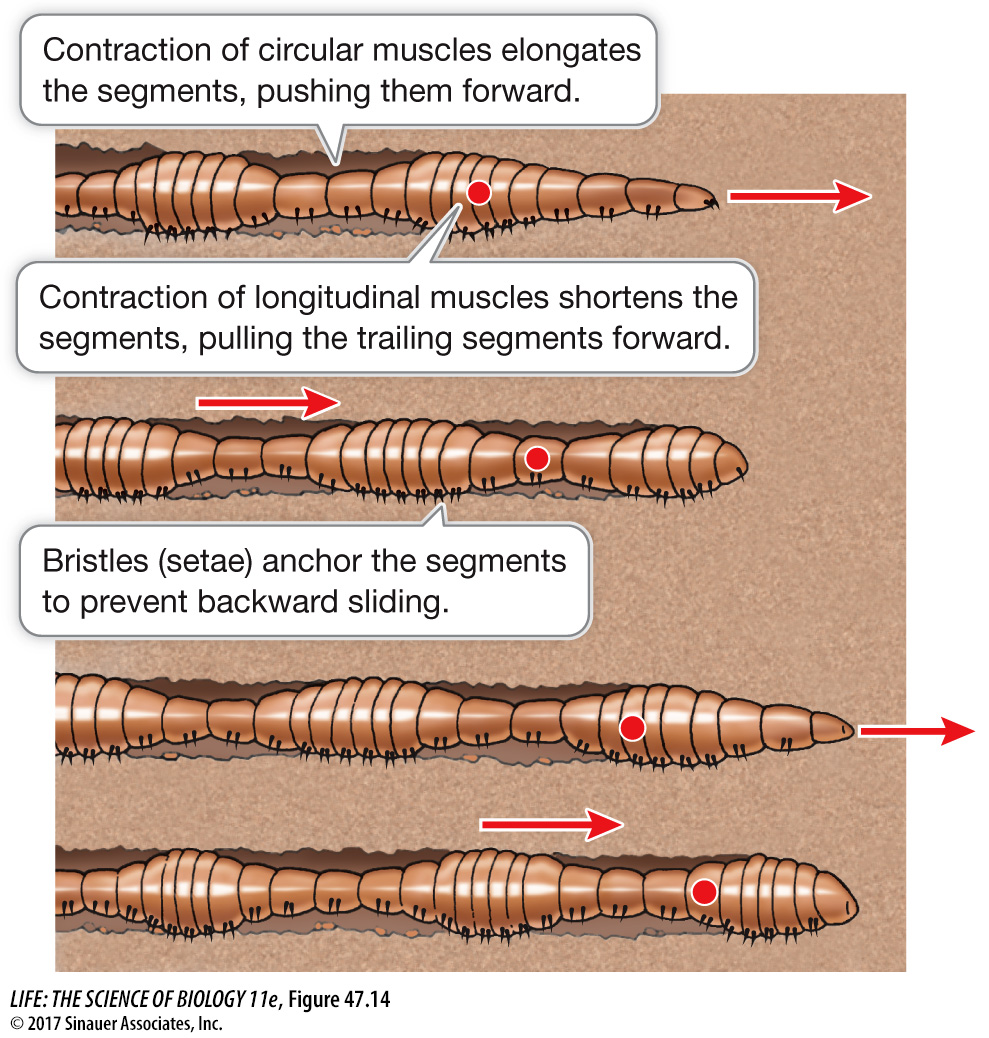A hydrostatic skeleton consists of fluid in a muscular cavity
Cnidarians, annelids, and other soft-
An earthworm uses its hydrostatic skeleton to crawl (Figure 47.14). The earthworm’s body cavity is divided into many separate segments filled with extracellular fluid. The body wall surrounding each segment has two muscle layers: a circular layer and a longitudinal layer. If the circular muscles in a segment contract, that segment constricts and elongates. If the longitudinal muscles in a segment contract, it shortens and bulges outward. Alternating contractions of the earthworm’s circular and longitudinal muscles create waves of narrowing and widening, lengthening and shortening, that travel down the body. Bulging, shortened segments serve as anchors as long, narrow segments project forward and longitudinal contractions pull other segments forward. Bristles help the widest parts of the body to hold firm against the substrate, so the body moves forward.
